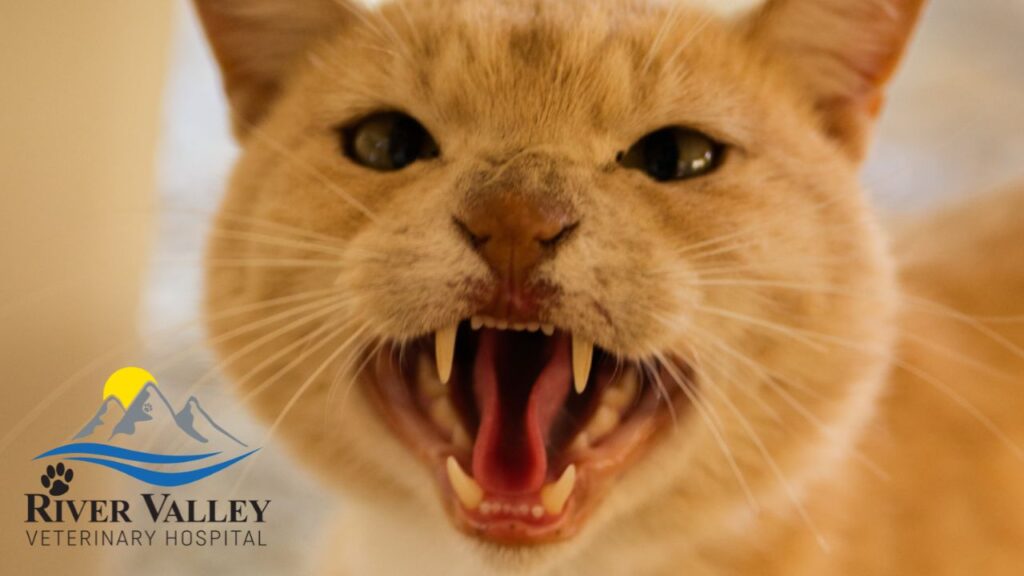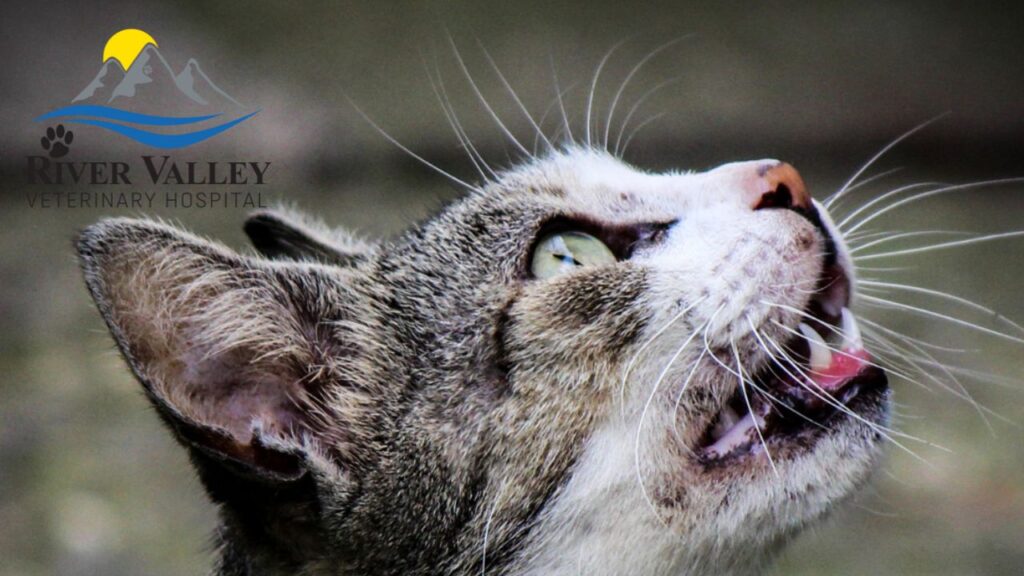Veterinarian Fox Chapel | What Is Your Cat Telling You Part Two
In part one, veterinarian Fox Chapel expert, Dr. Linkenheimer discusses Other than purring, cats make a variety of vocal sounds, that all indicate different and varying things. The most obvious vocalization a cat makes is meowing. However, it’s interesting says veterinarian Fox Chapel owner, Dr. Linkenheimer. Because in reality, cats don’t really meow all that much themselves, or to each other. Kittens and the mama cat meow to each other, but once the cats grow up, they rarely meow. That means a cat meowing is a vocalization almost exclusively to communicate with us humans.
So What Is Your Cat Telling you? They may meow as a greeting when you get home, or just chattiness when they are pleased. Or they’ve learned that persistent meowing at meal times hastens it’s arrival in their food dish. However, it should be noted, says Veterinarian Fox Chapel expert, Dr. Linkenheimer. That if a cat is consistently meowing without stopping, that can indicate that something is wrong.
The general rule of thumb is if your cat is ever acting differently than normal, just take them to a veterinarian Fox Chapel, like River Valley Veterinary Hospital. As you get to know your cat and their idiosyncrasies, you will know when something is amiss.
Growling Cats Are Sending A Warning
Another type of vocalizing according to Dr. Linkenheimer a veterinarian Fox Chapel expert, cats growl, hiss and yowl. The growling, hissing and yowling usually express a warning. A growl means “back off” and you should leave your cat alone. If they are growling at another animal, watch for signs of whether your cat is scared, or going to potentially aggressive.
Do not approach a hissing cat
A hissing also indicated that the cat feels threatened, and the hiss comes after the growl is the threat has not been eliminated. The cat is getting ready for fight or flight, and the hiss has the added benefit of showing off their fangs, in one final attempt to intimidate the threat away.
If after growling and hissing, if the threat is not eliminated, the cat will finally yowl. This is the indication that the cat feels like they have no choice but to fight or flee. Again, the rest of their body will indicate what the cat is most likely going to do, but do what you can to eliminate what the cat is upset about. If they are upset with strangers in the home, leave your cat alone. If another animal is stressing your cat out, try to shoo the other animal away so that this situation does not escalate, causing more stress to your pet and forcing them to go into fight or flight mode.
Have You Heard Your Cat Trill?
Opposite to growling, hissing and yowling, Dr. Linkenheimer the expert veterinarian Fox Chapel says there is the trilling, chirping and chattering. A trill is higher pitched and more sing-song like than a meow, similar to the sound of a bike bell. Is often a sound only reserved for a mother cat to their kitten. And while a meow can express many things such as excitement, a greeting or frustration, a trill is a friendly sound, always expressing happiness. Many cat owners note that their cat trills when they get home from work every day. While not all cats trill, if yours does, this sound is just for you.
The chirping and chattering are often similar to meowing, as they express excitement, and frustration. Often, this sound comes when the cat is excited, often when they see something out the they cannot hunt. A bug, or a bird that is out of the cat’s reach are causes for chattering and chirping. A cat owner who recently put a bird feeder outside their window noted their cat started chirping and chattering at the increased number of birds who now come to the yard. (https://carnegiemnh.org/cat-chat-101-the-basics-of-domestic-and-wild-vocalizations/)
Get To Know Your Cats Noises
And while cats have a wide variety of noises and vocalizations that they make, and some of their noises are learned from their interactions with you. Dr. Linkenheimer, expert at veterinarian Fox Chapel clinic says that all of the same types of noises are made by big cats and “smaller” big cats. While the names of the vocalization in big cats and lesser are different, from growling, roaring, chuffing.
Big cats don’t purr
Big cats like lions, tigers, leopard and jaguars don’t purr or meow, due to a different bone in their neck. Smaller big cats, like cougars, lynx, bobcats will vocalize in growls, chuffing, meows and purrs, but don’t roar. It’s fascinating to know that no matter what kind of cat, they all that similarly and for the same reasons!
While vocalizations are only one way that cats talk, we discuss in this six part series all the ways a cat communicates. Next article is all about the body language of your furry feline friend. When you start to meaningfully understand your cat, your bond will definitely deepen! Watch for part three, and if you have any questions in the mean time, visit veterinarian Fox Chapel, where they will not only be delighted to meet your cat, but answer all your questions as well!



